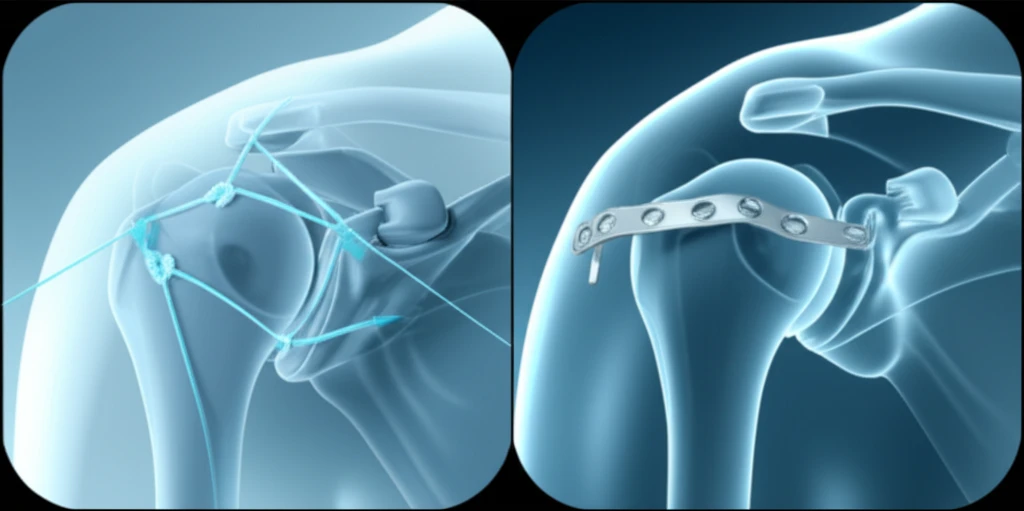
Tightrope vs. Hook Plate: Which is Best for AC Joint Dislocations?
"A comparison of arthroscopic tightrope fixation and hook plate fixation for acute AC joint dislocations: weighing the benefits and risks."
Acromioclavicular joint (ACJ) separations, commonly known as shoulder separations, are frequent injuries, particularly among athletes and active individuals. These injuries occur when the ligaments connecting the collarbone (clavicle) to the shoulder blade (scapula) are damaged, leading to pain, instability, and limited range of motion. The severity of ACJ separations varies, with high-grade separations (types III-VI) representing complete dislocations that often require surgical intervention.
When surgery is needed, two modern techniques have become popular: hook plate fixation and coracoclavicular (CC) ligament fixation using a suspensory loop device, often referred to by the brand name Tightrope. Both methods aim to restore stability to the AC joint, but they differ significantly in their approach and potential outcomes. Hook plate fixation involves using a metal plate with a hook that anchors under the acromion (part of the scapula), while Tightrope fixation utilizes strong sutures to secure the clavicle to the coracoid process (another part of the scapula).
Given the ongoing debate about which technique yields the best results, a study was conducted to compare the short-term outcomes of arthroscopic Tightrope fixation with those of hook plate fixation in patients with acute unstable ACJ dislocations. This article will delve into the findings of this research, providing insights into the benefits and drawbacks of each surgical approach to help patients and healthcare professionals make informed decisions.
Tightrope Fixation vs. Hook Plate Fixation: Understanding the Surgical Techniques

Arthroscopic Tightrope fixation is a minimally invasive procedure that involves creating small incisions around the shoulder joint. The surgeon then uses an arthroscope, a small camera, to visualize the joint and guide the placement of strong sutures between the clavicle and the coracoid process. These sutures act like a tightrope, pulling the clavicle back into its correct position and stabilizing the AC joint. This technique aims to restore the natural alignment of the joint while minimizing damage to surrounding tissues.
- Arthroscopic Tightrope Fixation:
- Minimally invasive with smaller incisions.
- Uses strong sutures to stabilize the joint.
- Aims to restore natural joint alignment.
- Less damage to surrounding tissues.
- Hook Plate Fixation:
- Involves a larger incision.
- Uses a metal plate with a hook for rigid fixation.
- Provides strong stabilization of the AC joint.
- More soft tissue damage compared to Tightrope fixation.
Which Method is Right for You?
Ultimately, the choice between arthroscopic Tightrope fixation and hook plate fixation for acute ACJ dislocations depends on individual patient factors and surgeon preference. While the study suggests that Tightrope fixation may offer superior short-term outcomes, both techniques can be effective in restoring stability to the AC joint and improving shoulder function. Consulting with an experienced orthopedic surgeon is crucial to determine the most appropriate treatment plan based on the specific characteristics of your injury and your overall health status. Further research, including larger randomized controlled trials, is needed to provide more definitive evidence on the long-term outcomes of these two surgical approaches.
